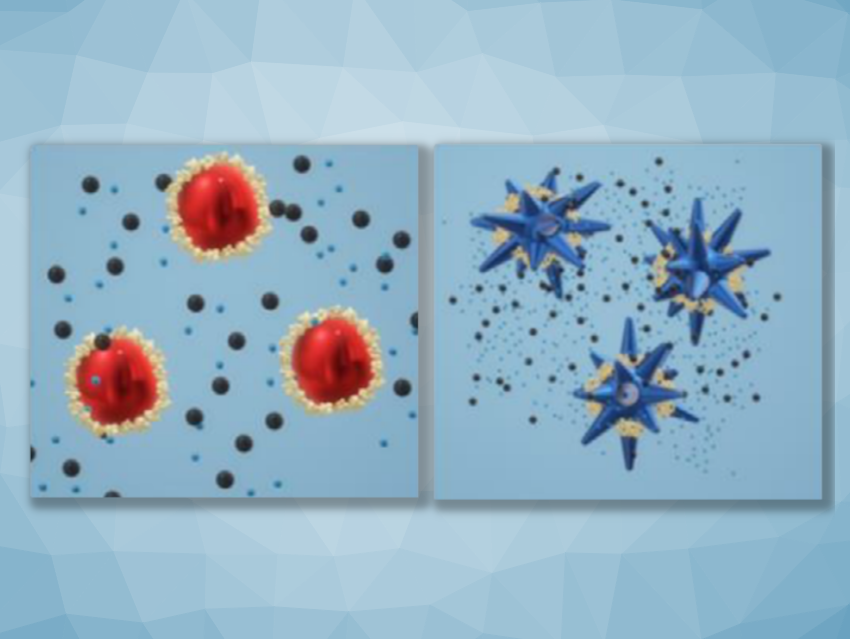Gold nanoparticles can have useful optoelectronic properties that can be fine-tuned using colloidal chemistry. This makes them promising, e.g., for medical applications. However, the behavior of gold nanoparticles in biological systems can be difficult to predict: Upon exposure to biological media, they can form a “protein corona” which changes their properties and the recognition by cells. The protein corona can also have beneficial effects, such as preventing nanoparticle aggregation, improving stability, reducing cytotoxicity, and increasing blood-circulation time.
Yuling Wang, Macquarie University, Sydney, Australia, and colleagues have investigated the protein corona formation around gold nanoparticles of different shapes, such as spherical gold nanoparticles and gold nanostars. The team tested the influence of the protein bovine serum albumin (BSA) on the nanoparticle stability in the presence of salts. For both shapes, protein-induced stabilization of the gold nanoparticles was observed.
However, the protein does not fully cover the surface of gold nanostars, leaving the “tips” and high-curvature edges free (pictured above on the right, protein in yellow). These sites, thus, remain available for analyte binding in surface-enhanced Raman scattering (SERS) applications. The team confirmed these findings using molecular dynamics (MD) simulations. They found that the adsorption energy significantly decreases with the increased radius of curvature, so that the stars’ tips are the least preferential binding site.
This research could have implications for the design of new nanomaterials for various applications, including biomedical imaging, drug delivery, and environmental remediation with improved sensing and targeting ability.
- Shape dependent protein‐induced stabilization of gold nanoparticles: From a protein corona perspective,
Anastasiia Tukova, Yihan Nie, Mohammad Tavakkoli Yaraki, Ngoc Thanh Tran, Jiaqiu Wang, Alison Rodger, Yuantong Gu, Yuling Wang,
Aggregate 2023.
https://doi.org/10.1002/agt2.323



![Synthesis of [c2]Daisy Chains via Mechanochemistry](https://www.chemistryviews.org/wp-content/uploads/2025/04/202504_RotaxanesWithSolidStateMechanochemistry-125x94.png)
